Hello!
First of all - for those of you who have ended up here because you are seeking allergy-friendly food, this post is especially for YOU! Because it's hard, isn't it? I never intended this blog to be a space for complaining about food preparation - making food for those I love (and even for those I've never met before) is one of life's truest pleasures for me. I love eating. I love helping others do things they love. The best means I've come up with so far are to feed people and, recently, to teach them how to feed themselves. A culinary student I once knew, when asked what she liked to make most, responded, "anything that's well-received." She, like me, needed a great deal of affirmation in her life and was self-aware enough to know that one of the best parts of feeding people is to have them enjoy it so much that they tell you - or show you, by going back for thirds. The gratification I feel from pleasing someone with a meal or treat is huge. Whether it's my husband, class participants, old friends, new friends, or my children - pleasure on their part means a job well done on my own, so it's a win-win.
The complaining started when the win-wins at home were harder to come by as the following foods were eliminated from our meals:
eggs
wheat
peanuts
chickpeas
shell fish / other fish
sesame seeds
lentils
strawberries
some lunch meats
Eggs and wheat are essential to mainstream baking. Chickpeas and lentils were staples in our home before Beckett's allergies were diagnosed. Strawberries are like the world's healthiest treat (when they don't cause hives). And the other foods aren't really big losses for us, but any additional restrictions on top of the aforementioned ones were just more to work around, you know?
So. Anyway. It's taken me a while to find foods that truly make Beckett happy. I mean, he likes cheese and meat and avocado and tomatoes, which is great, but I rarely have much of an impact on their preparation - although I am a champion avocado slicer. And, while it's not all about me, and mostly I'm just grateful that we know what he can safely eat and have learned how to feed him several times a day without seeing a reaction, sometimes a mama just wants her baby to chow down on a homemade baked good! So sue me.
At a first-birthday-party we were at the other day, the carrot cake my friend made for her daughter was delicious. Super moist, just enough spice, pretty darn healthy as far as cakes go, and really pretty! The birthday girl was in HEAVEN devouring her first taste of treat, and it was really fun to watch. Beckett couldn't have any because it had flour and eggs in it, but I knew the flavors would appeal to him and promptly decided to make a pancake version for him when I got home from the party.
Guess what? They are perfect!
The method I used for the pancake batter requires a VitaMix or other high-powered blender, and was introduced to me by Kim Wilson, who has self-published several books and blogs about wholesome eating on her website, WHOLEmade. Her basic pancake recipe is here and it's great - my mom told me that my 6-year-old nephew who does not have food allergies actually preferred some frozen, reheated ones over the mainstream delicious fluffy buttermilk pancakes she made for him! (I have used her soaked-blended grain batter approach to make her "slicing bread" (for which I cannot find the link at the moment) and this flat bread, the former seeing moderate success and the latter being absolutely amazing. (She also has a banana muffin recipe using the same approach; it sounds good but I haven't tried it.))
If you are into soaking grains and incorporating vegetables into your baked goods and using a VitaMix several times a day, you will have fun with these. If you like carrot cake or pancakes, you will like these. If you are navigating food allergies and are eager to find a good egg-free, gluten-free, dairy-free pancake recipe, you will LOVE these almost as much as your allergic child! (Although, since we're not dairy free in our house, I can't wait to make a cream cheese glaze to accompany these next time around.)
Here are photos of the pancakes-in-progress. The recipe will elucidate any pictures that are weird and/or at odds with your current pancake-making experience.
Carrot Cake Pancakes (Gluten-Free and Vegan)
Yield: about 40-50 four-inch pancakes
1 1/4 cup brown rice
3/4 cup raw buckwheat groats or millet*
2 tablespoons apple cider vinegar, whey, or lemon juice
--------------
1 cup chopped, cooked carrots
1 1/4 cups water (to start)
2 tablespoons ground flax seed
2 tablespoons oil
2 tablespoons maple syrup or honey
2 teaspoons vanilla extract
1 teaspoon apple cider vinegar
1 teaspoon salt
1 teaspoon cinnamon
2 teaspoons baking powder
--------------
Coconut oil or butter for frying
In a large bowl or measuring cup, cover brown rice and buckwheat groats with water by about 2 inches. Add 2 tablespoons apple cider vinegar, whey, or lemon juice and soak for 8-24 hours. Drain the grains, rinse them in a fine sieve, and pour them into your blender. Add the remaining ingredients, except for the baking powder, and blend until smooth. Add a little more water, 1-2 tablespoons at a time if you'd like a thinner batter. Add the baking powder and blend briefly.
Heat coconut oil or butter in a skillet or griddle over medium-high heat. Add pancake batter in 2-tablespoon increments (my batter was thin and spread considerably to make perfect 4" pancakes). Cook for a couple minutes over medium heat and once bubbles begin to form (see picture above), carefully flip and cook another minute or two.
* I think the buckwheat has a nicer, milder flavor than the millet.
These freeze BEAUTIFULLY - both taste and texture are maintained for several weeks, which I've found isn't always the case when working with gluten-free grains. I let them cool on racks and then place them in a freezer bag with aluminum foil or waxed paper in between layers. I bring them in tupperware containers to thaw at room temp when we're going to be out, or I reheat them in the microwave for 20-30 seconds if we're home. Beckett likes them either way.

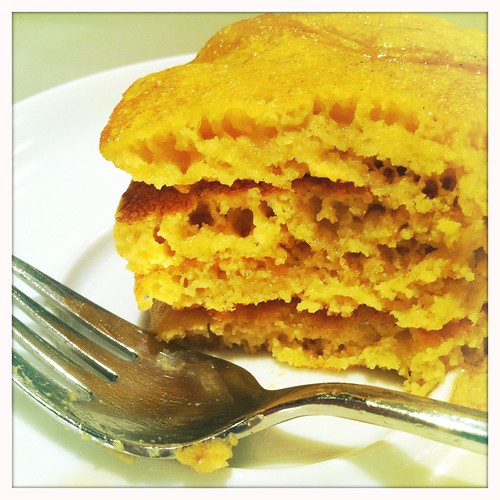
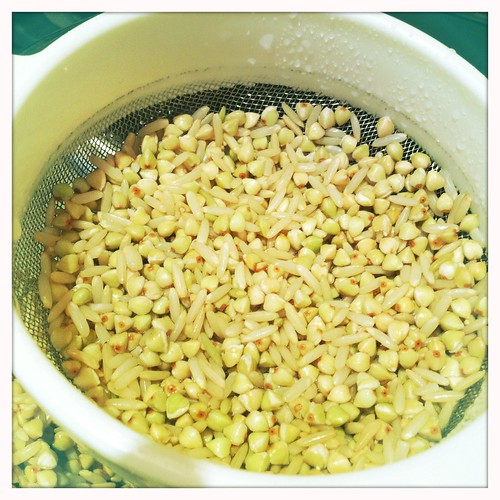
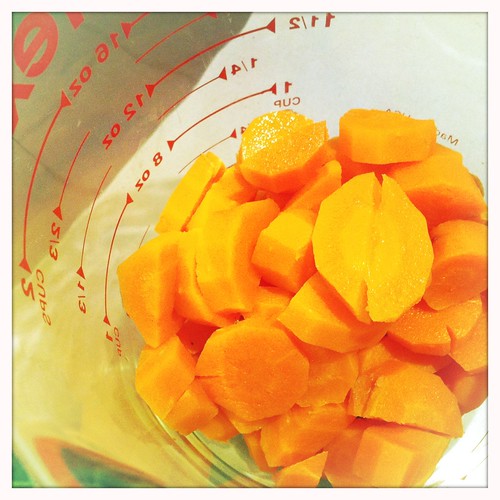
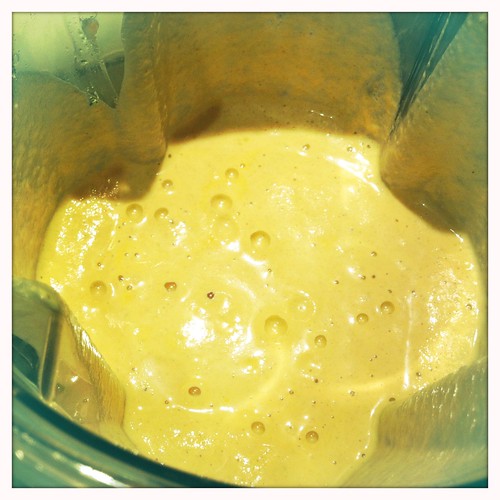
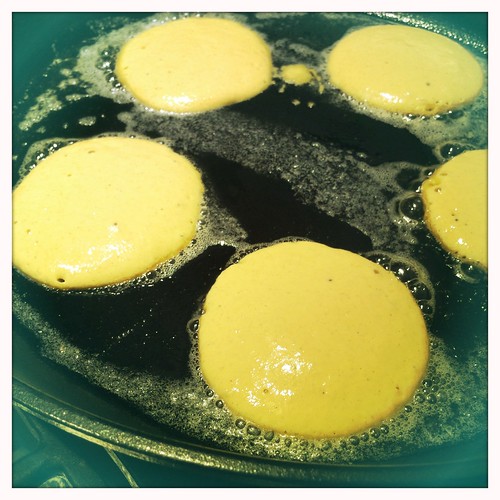
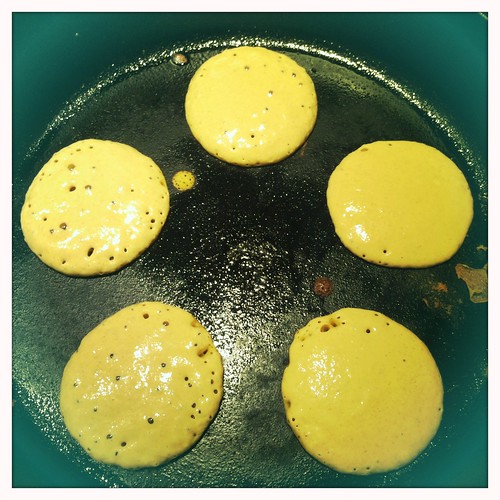
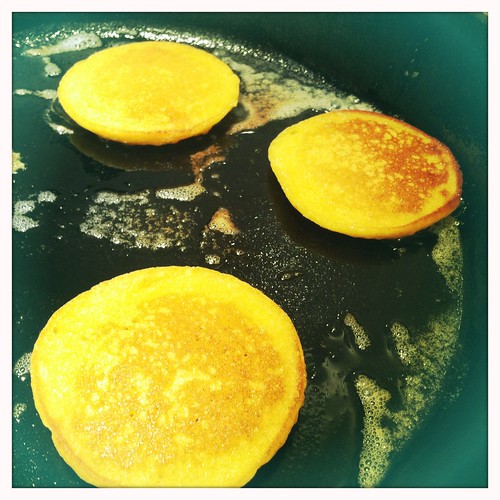
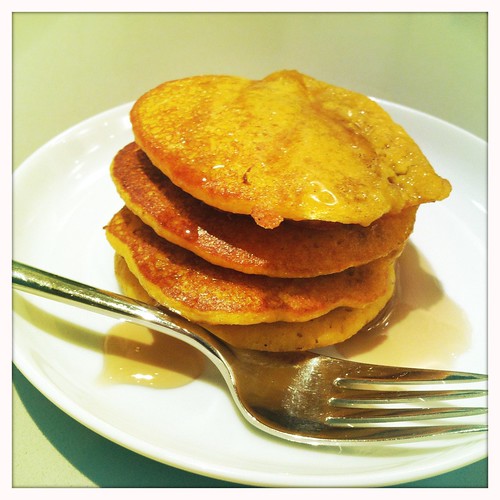
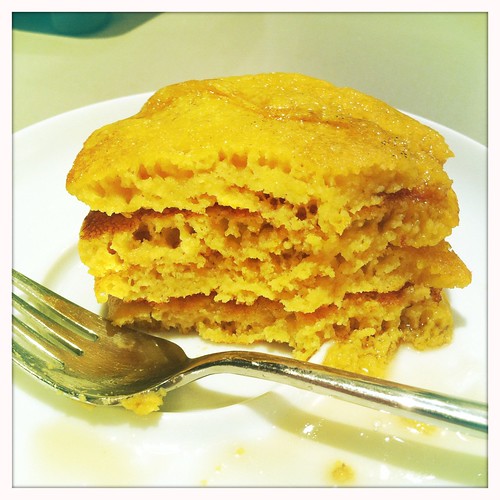
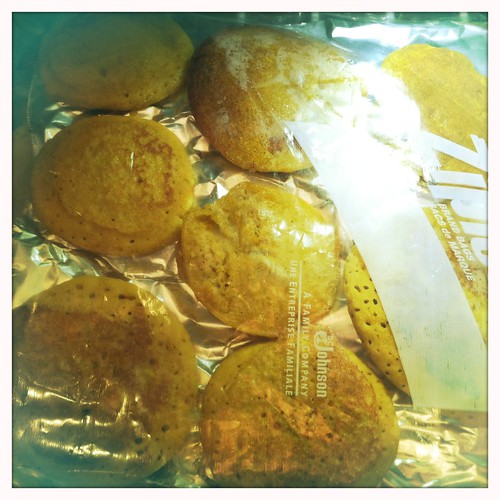
Edith! Firstly, I love you! Secondly, for those of us on a teacher's salary (i.e. Viatamix-less), maybe can we just use brown rice flour & buckwheat flour? I realize this means the grains will not be soaked (which I happen to LOVE to do), but I really want to try this out! xoxo
ReplyDeleteDo you have a food processor? That might work too since the grains, once soaked, are pretty soft. But if you try the flour version let me know how it goes. And maybe soak the flours and then mix everything in a stand mixer the next day?
DeleteYou're a genius. You've really come so far since our days of falling cakes in highschool.
ReplyDelete